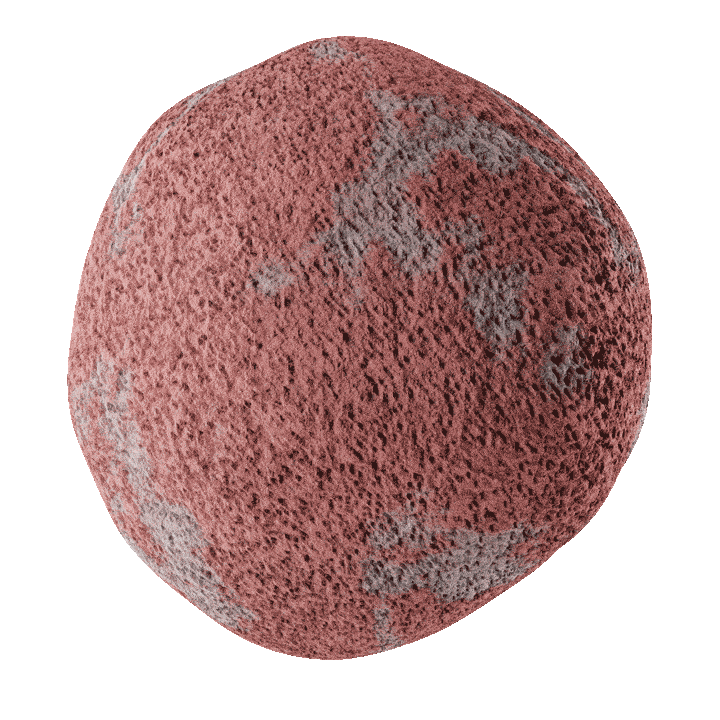One of the by-products of iron ore is iron pellet. This product initially exists in raw form and after solidifying in furnaces, it is transformed into spherical pellets with dimensions of 6 to 16 millimeters. These products relatively contain 64 to 72 percent iron and are not completely pure. Various chemical substances and compounds are used in the production of these products, including limestone, dolomite, olivine, and bentonite. In this article, we intend to fully introduce this product, its characteristics, and its advantages. So stay with us until the end.
Pellet
This product is used as one of the primary materials for producing raw iron. It is created from iron minerals that, due to their high gas volume, do not melt in furnaces and consequently transform into iron pellets.
Compared to other similar types, pellets have a higher percentage of produced iron, and similar materials have higher impurities. Since this product is made in large industrial furnaces, it has larger dimensions and higher strength, and the resistance of pellets during production depends on the surface contact and discharge temperature. Additionally, to produce this product, crushed and ground iron ores with dimensions of 0 to 100 microns are used, and they are predominantly used in steel production plants and mines.
What is the production method of pellets?
The process of producing this product is somewhat complex because it requires the use of various raw and primary materials. In addition to using raw materials, the formation of pellet shape and various heat operations are carried out on this product, ultimately resulting in the production of a high-quality product with high strength.
At the beginning of the process, iron ore should be combined with water and other minerals using special devices with dimensions of 45 microns. The initial raw materials include lime, calcium hydroxide, bentonite, and various mineral adhesives. After the initial combination of these materials, they enter the configuration stage.
One of the important stages of pellet production is configuration. Configuring these pellets creates airflow between them, reducing their resistance during the airflow that occurs during melting. All these initial processes lead to the compression of iron materials and their transformation into fine particles. All initial stages before baking must be carried out with precision and high sensitivity to increase the quality of these pellets.
The quality of this product depends on the crushing and grinding of iron ore at the beginning, the amount of initial mineral additives, the speed of material mixing with the disc device, and the baking time. However, we will continue to explain the complete stages of producing these pellets.
Preparation of raw materials
As mentioned, during the start of work, we used materials such as lime, calcium hydroxide, and bentonite, and we placed all these materials along with water inside the pelletizing device and allowed them to mix well. To obtain an answer to the question of what is pelletizing, carefully study the next stages.
Use of pelletizing cones
To produce a high quality product, it is necessary to use excellent equipment. Pelletizers and cones are an important part of the production process. In addition to these two, using high-quality discs ensures the equal and consistent spraying of water onto the materials, leading to concentration.
Baking raw pellets
As mentioned in the previous stage, concentration is obtained. Since the concentrated material in the previous stage contains water, it needs to be baked in raw form to gain relative resistance to higher temperatures.
Drying
In this stage, the product is dried and completely free of any moisture.
Heating
Before baking at high temperatures, the obtained product must be exposed to a temperature exceeding 1000 degrees.
Pellet baking
This product must be cooked at a temperature above 50 degrees Celsius, as heat helps preserve durability and enhance the quality of this product. If the oven temperature is lower than 50 degrees, it may cause the product to crack or break.
Based on the mentioned stages, we hope you have received the answer to the question, “What is Pellet?”
What are the advantages of Pellets?
Pellet has many advantages and features, and we will mention some important characteristics and benefits below.
Due to its higher index compared to similar materials, this product can be used as a more suitable substitute for iron ore pellets. Additionally, these pellets have a high porosity, allowing for the absorption of other raw materials. The porosity of these pellets is approximately 25 to 35 percent, which causes them to be crushed faster compared to sinter and iron ore lumps.
One of the factors contributing to the high permeability of this product is its dimensions. The dimensions of these pellets are approximately 8 to 16 millimeters, and their spherical shape increases their permeability.
Although these pellets do not have a perfectly spherical shape and their uneven surface prevents uniform distribution of the adhesive, they have a consistent analysis. The uniformity of the iron content, which is approximately 65 to 70 percent, prevents complete ignition of these pellets.
Other characteristics of these pellets include high strength, ability to withstand long distances, non-combustibility, high resistance to decomposition and erosion, resistance to fragmentation, and tolerance to high temperatures.
In conclusion
In this article, we tried to introduce you to this product comprehensively. However, for more information and the purchase of a high-quality product, you can visit the website Kaladasht.com and fill out the contact form to receive a wide range of services, including purchasing guidance and the price of this product.


